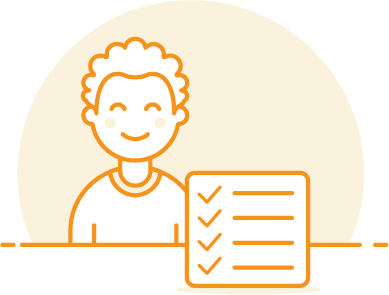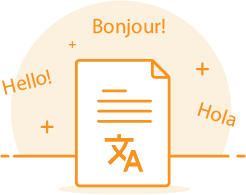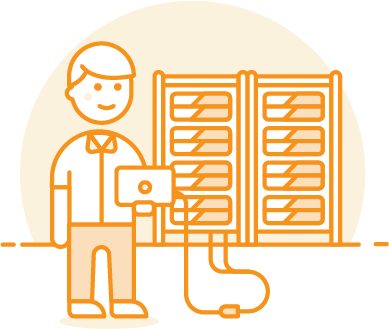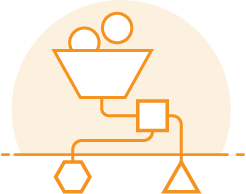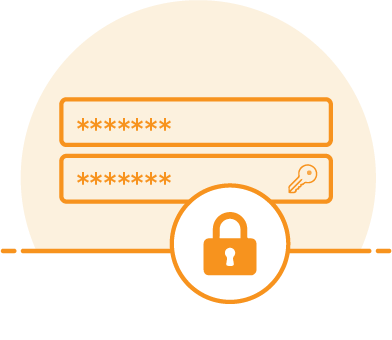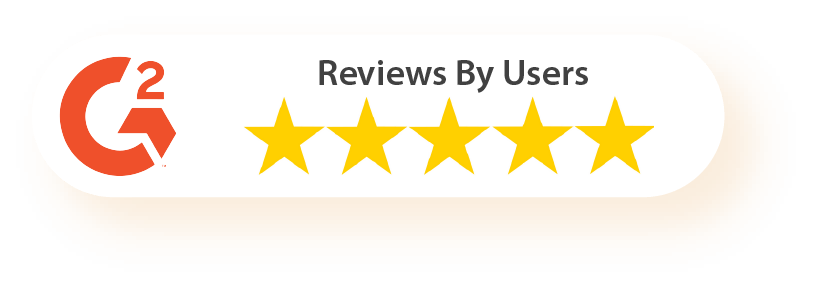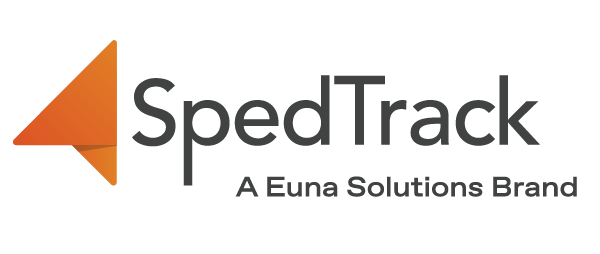IEP meetings are a crucial part of the IEP process, and school administrators need to come prepared.
As a school administrator, you play a vital role in ensuring that Individualized Education Programs (IEPs) are developed and implemented effectively.
To help you facilitate a successful IEP meeting, we’ve created an IEP checklist of what to do before, during, and after the sit-down. This article rounds up everything you need to know to ensure an effective and productive IEP meeting.
Need special education software that’s compatible with the Student Information System that your team already uses? Look no further than SpedTrack, which comes with SIS integration.
What to Expect from an IEP Meeting
An IEP meeting is a time for the IEP team to discuss the child’s IEP goals, assess the student’s present levels, address parent concerns, get parental input on their child’s needs, and decide what special education services are necessary to meet the child’s needs.
The meeting will usually begin with an overview of the IEP, followed by a discussion of specific goals for the child. As administrators facilitate the IEP meeting, parents should be prepared to share information about their child’s strengths and challenges, and members of the IEP team to provide input on what services would meet the child’s needs.
IEP meetings are required by law and typically last around an hour. They also include a review of testing and assessment data and allow parents to ask questions and bring up any issues.
Before the IEP Meeting
The IEP meeting is an essential step in the IEP process of providing a quality education for students with disabilities. As an administrator, there are certain things you should prepare for before the IEP meeting:
- Gather relevant documents and data
- Develop an agenda
- Send out IEP meeting notices
You can ensure that the IEP meeting is as effective and productive as possible by preparing ahead of time.
Gather Relevant Documents & Data
There are a few key things you should do in preparation for the IEP meeting. The first is to gather relevant documents and data, which may include (but not be limited to) the following:
- Work samples
- Assessment results
- Important observations
- Parent consent forms
- Report cards
- Progress reports
Keep in mind that some reports may need to be requested ahead of time, so consider the turnaround time. Ask for them in advance and ensure that you have copies for all attendees several days before the meeting.
Review the information gathered. Make sure you are familiar with all the documents and data discussed at the meeting.
Coordinate with the IEP team and discuss the upcoming meeting, preparing a list of questions, issues, and other topics that need to be covered.
Develop an Agenda to Stay Organized
It is helpful to develop an agenda and gather any information or documentation you want to share with the team to make the most of the IEP meeting.
Remember, the IEP meeting is an opportunity to discuss the child’s IEP goals, services, accommodations & modifications, and other key info. We find it is most helpful to organize your agenda in a way that naturally follows the special education process: Present Levels > IEP Goals > Services > Accommodations & Modifications
Don’t forget to send the agenda to the attendees days before the IEP meeting.
Send Out IEP Meeting Notices
One of the most important aspects of having an effective IEP meeting is ensuring that the relevant people are in attendance. The attendees should include parents or guardians of the student, special education teachers, general education teachers, service providers, case managers, and any other professionals working with the student.
A Notice of Meeting and calendar invites should be sent out well before the meeting, giving the attendees time to review any documentation and list down questions.
Notices also enable the attendees to confirm their availability and for the administrator to find a common time when not everyone can be present for the meeting.
During the IEP Meeting
School administrators should be prepared to facilitate the IEP meeting, answer any questions parents may have, provide updates on the student’s progress, and discuss any concerns that may have arisen.
To make this possible, below is a checklist of things to do during the IEP meeting:
- Go over the agenda and purpose of the meeting
- Discuss students’ Present Levels of Performance
- Discuss proposed IEP goals
- Determine student accommodations and modifications
- Determine the schedule of student services and placement
- Explain how progress will be tracked to evaluate student performance toward goals
- Collect relevant signatures and consent
Go Over the Agenda and Purpose of the Meeting
The agenda and purpose of the IEP meeting vary depending on the child’s IEP goals.
As the IEP meeting begins, it is essential to go over the agenda and make sure everyone understands it. The purpose of the meeting should also be made clear so that everyone is on the same page.
The IEP meeting should start with reviewing the child’s strengths and present levels. This will give the parents an idea of where their child is doing well and can be used as a basis for future discussions.
From there, the IEP team should move on to discuss the child’s IEP goals and the special education services or related services, accommodations, and modifications that the child needs to succeed in school.
The following is a sample agenda that can be used for an IEP meeting and can be modified to fit the needs of the student and their family.
- Welcome and introductions
- Review of the student’s progress, how the student is performing with grade-level standards (discussion on the progress monitoring report)
- Discussion of the student’s strengths and weaknesses
- Goals for the upcoming school year
- Special education services and related services that will be provided
- Discussion of accommodations and modifications
- How the school and parents will work together to support the student
Here’s another sample of an IEP meeting agenda from the San Mateo County Office of Education.
Discuss Students’ Present Levels of Performance
When discussing a student’s present levels of performance, it is essential to provide specific, concrete examples of what the student can and cannot do. This will help the team create an accurate and meaningful IEP for the student.
Below are some tips for discussing a student’s present levels of performance:
- Use observable, measurable, and specific language when describing the student’s skills.
- Use collected IEP data to support your observations.
- Describe the student’s strengths as well as areas of need.
- Discuss how the student’s disability affects their learning.
- Share information about the student’s motivation and interests.
- Provide examples of accommodations or modifications that have been effective in the past.
Discuss Proposed IEP Goals
It is crucial to discuss the proposed IEP goals with the IEP team. This discussion should include:
- The student’s current IEP, level of functioning, and how this compares to their peers
- Any assessments that the student has taken
- What the IEP goals are and how they will be achieved
- The timeframe for completing the goal
- How the goals will be measured
- What adaptations or accommodations may be necessary to help the student achieve the goal
School administrators will need this information to ensure that they can adequately support the student in reaching their goals.
It is also vital to discuss any parents’ concerns about the goals or the student’s ability to achieve them, ensuring that all stakeholders are on the same page and working together towards the same goal for the child with a disability.
Determine Student Accommodations & Modifications
When determining what accommodations and modifications the child will need to be successful in school, IDEA recommends parental involvement as much as possible.
At the IEP meeting, you will want to discuss the current needs of the child and how best to accommodate them. You will also want to provide examples of accommodations and modifications that have been successful for other students in the past.
By doing this, you can ensure that everyone in the IEP team is on the same page when it comes to meeting the child’s needs. This will also help to avoid any confusion or conflict later on.
Many different accommodations and modifications can be provided to help a child succeed. Some of these include:
- Allowing the child to have extra time on tests and assignments
- Modifying the structure of the classroom to meet the child’s needs
- Providing the child with a quiet place to work
- Allowing the child to use assistive technology
These are just a few examples of accommodations and modifications. Remember, every child is different and will require various accommodations and modifications to succeed.
You may find the complete list of accommodations here.
Determine the Schedule of Student Services & Classroom Placement
School administrators play a critical role in ensuring that the child receives the special education services, related services, and placement they need to succeed in school.
Once the services, accommodations, modifications, and placements are discussed, determine the schedule of each and ensure that they are made available for the child. This includes coordinating schedules, keeping in mind that they need to be provided in the Least Restrictive Environment (LRE).
Explain How Progress Will Be Tracked to Evaluate Student Performance Toward Goals
One of the things to cover during an IEP meeting is how progress monitoring will be implemented.
IEP data collection and quarterly progress monitoring are crucial because it allows the team to measure whether or not the student is making progress and meeting the goals set for them.
There are a few different ways that progress can be tracked, and each method has its advantages and disadvantages.
The first way to track progress is to use standardized tests. Standardized tests are given to students at regular intervals and used to measure how well the student is doing with other students of the same age. The advantage of using standardized tests to track progress is accurate and reliable. However, standardized tests can be expensive and time-consuming to administer.
Another way to track progress is to use anecdotal records kept by teachers of the student’s day-to-day progress. The advantage of using anecdotal records to track progress is that they are easy to hold and provide a lot of detail. However, using anecdotal records can be subjective.
Student progress can also be tracked using goal attainment scales, which measure how well the student is doing concerning the goals that have been set for them. The advantage of using goal attainment scales to track progress is that they are easy to use and accurate. The downside is that they can be time-consuming to develop.
Which method of progress monitoring the team decides to use is up to them, but they must decide on a strategy and stick to it. This will allow them to measure the student’s progress accurately and reliably over time.
Collect Relevant Signatures & Consent for Initial IEPs
Collecting signatures and obtaining consent are procedural safeguards in the initial IEP process.
Parents must provide written consent before their child’s initial IEP can be implemented.
It is also a way to ensure that parents clearly understand what is happening at the IEP meeting and get their input on important decisions.
Some of the decisions that need to be made during the IEP meeting include:
- The type of educational program, services, and placements the child will receive
- Whether or not the child will take part in state or district assessments
- Accommodations and modifications to be provided
After the IEP Meeting
The process does not end when the IEP meeting concludes. The school administrator should follow through with the following:
- Providing parents with a copy of the finalized IEP
- Sending a document that summarizes the meeting
- Logging a record in a special education solution
Provide Parents with a Copy of the Finalized IEP
Ensure that a copy of the IEP is furnished to all the meeting attendees and those who could not make it. Circulate the draft IEP to the members of the IEP team for further comments, questions, and revisions.
Once finalized, the school administrator must send the finalized IEP to all relevant stakeholders.
Send a Document That Summarizes the Meeting
Type up the meeting notes and highlight key discussion points, including decisions made, next steps, responsibilities, and timings/deadlines.
Don’t forget to attach any supporting documents and reports.
Log a Record in Your Special Education Solution
Record everything that happened in the meeting, including meeting attendees and notes. Consider using a tool to make these contents available and easily accessible by relevant stakeholders.
Are you tired of waiting on expensive translators to translate your IEPs SpedTrack’s translation solution instantly generates your special education forms in over 100 different languages.
Streamline Your IEPs with SpedTrack
Preparing for an IEP meeting can seem daunting, but it can be a breeze with the right tools.
Having all of your documents ready and knowing what to expect before, during, and after the IEP meeting will ensure that everyone is on the same page and that your students receive the best education possible.
Using SpedTrack to manage your IEPs can help ensure a successful IEP meeting by providing an easy–to–use platform for school administrators.
Contact us today to learn more about how our platform can help you prepare for IEP meetings, track student progress, and simplify special education.



